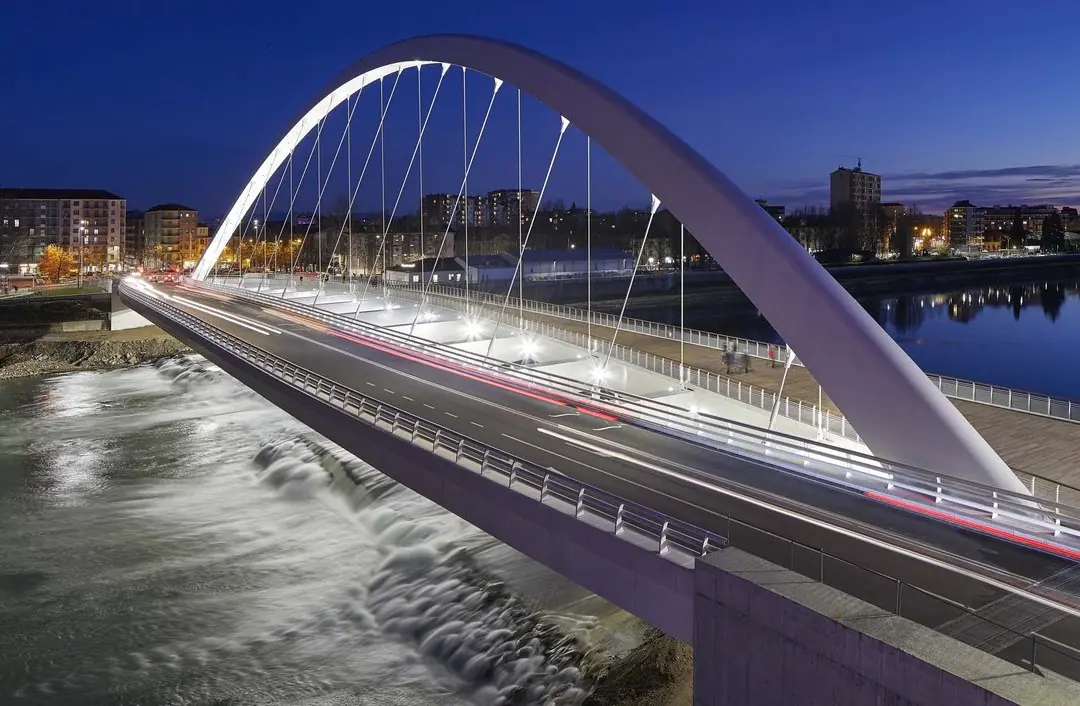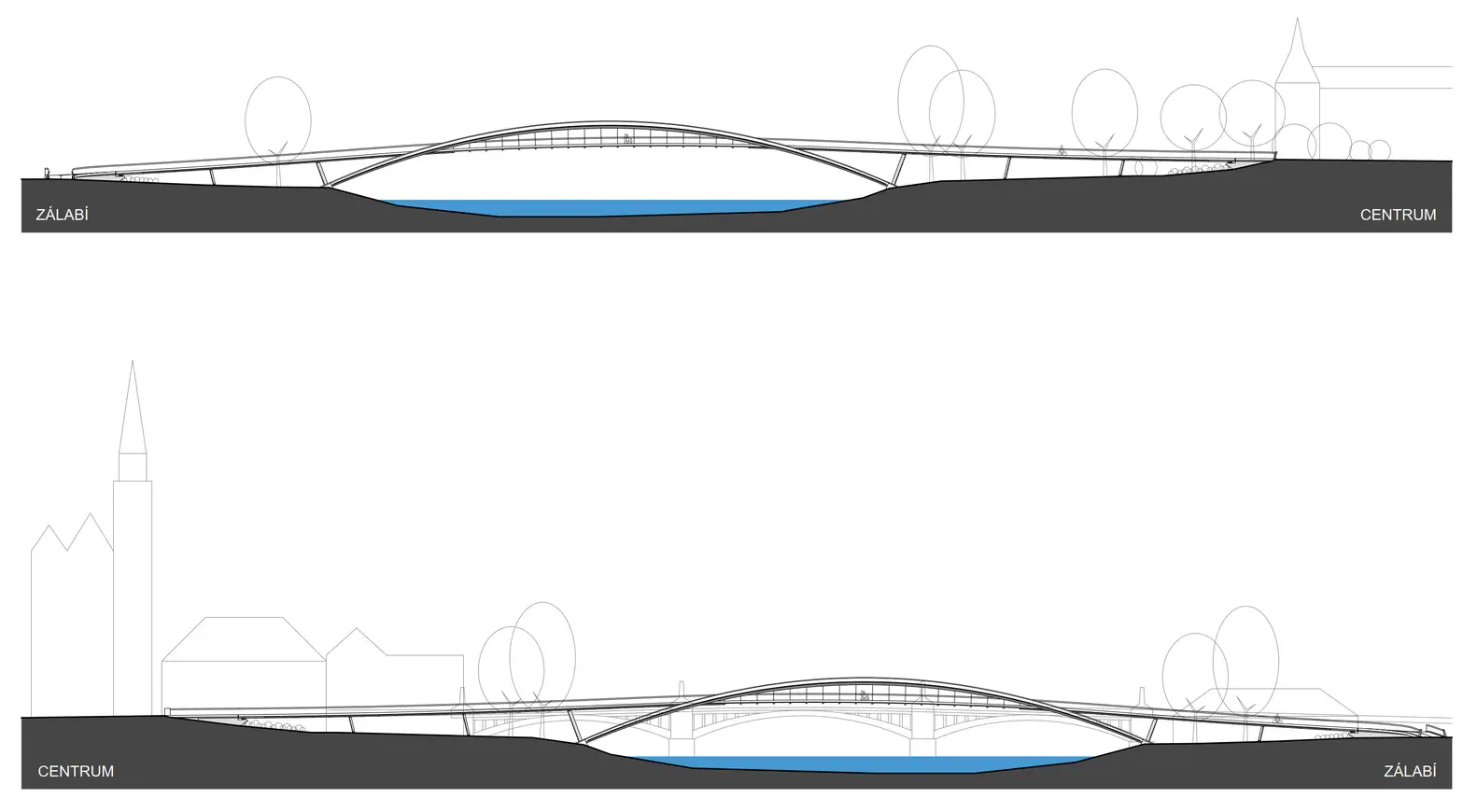As cities around the world embrace the transformative power of lighting, bridges become iconic canvases, waiting to come to life after dusk. In this comprehensive guide, we’;ll explore all aspects of bridge lighting, from understanding the different lighting systems to planning and implementing a successful project.
The Significance of LED Bridge Lighting

LED bridge lighting has revolutionized the professional lighting industry by offering a wide range of benefits that propel the field forward. From the perspective of lighting practitioners, the importance of LED bridge lighting cannot be overstated. The following factors shed light on the significance of LED bridge lighting.
Enhancing the Architectural Charm of the Bridge
When it comes to visiting renowned bridges around the world, people often envision seeing them illuminated at night. LED technology provides lighting practitioners with unparalleled design flexibility, empowering them to unleash their creativity and achieve breathtaking lighting effects on bridges.
With a diverse array of color options, dimming capabilities, and dynamic control systems, LED bridge lighting enables professionals to create captivating visual experiences that accentuate the bridge’;s architectural allure, harmonize with the surroundings, and evoke a range of emotions in spectators. The versatility of LED lighting allows practitioners to experiment with various techniques, such as color transitions, dynamic patterns, and programmable sequences, opening up endless possibilities for artistic expression.
Enhancing Safety and Security
One of the primary reasons why bridge lighting holds immense importance is its contribution to safety. Illuminating bridges adequately is crucial to ensure safe passage for pedestrians and motorists alike. LED bridge lighting plays a pivotal role in this aspect, as it ensures optimal visibility, enabling everyone to navigate the bridge with confidence.
By deploying LED bridge lights, an ample amount of illumination is guaranteed, minimizing the risk of accidents or injuries. This fosters a sense of security, allowing individuals to perceive their surroundings clearly and move about without apprehension. LED bridge lighting serves as a reliable solution to enhance safety and create an environment where accidents are less likely to occur.
Energy Efficiency and Conservation
Another compelling reason behind the significance of bridge lighting lies in its potential for energy conservation. By transitioning to LED bridge lighting, substantial energy savings can be achieved. In fact, making the switch to LED technology can result in energy savings of up to 75%, leading to reduced operational costs and a diminished environmental impact.
For lighting practitioners, LED bridge lighting represents an opportunity to contribute to sustainable lighting solutions while meeting the rising demand for energy-efficient infrastructure. By embracing LED technology, professionals can play their part in minimizing energy consumption and supporting environmentally conscious lighting designs. LED bridge lighting not only saves energy but also paves the way for a greener and more sustainable future.
;
Precautions for bridge lighting

After gaining a deeper understanding of the importance of LED bridge lighting, you may find yourself the key factors to consider when considering purchasing LED lighting for your bridge.
Security and Visibility:
The primary consideration in bridge lighting design is to ensure the safety and visibility of pedestrians, cyclists and drivers using the bridge. The lighting scheme should provide sufficient lighting to allow a clear view of the bridge structure, access roads and any potential obstructions. Adequate lighting levels and even distribution are critical to minimizing glare, shadows and blind spots to ensure safe passage across bridges.
Aesthetics and Atmosphere:
Bridge lighting can be used as an opportunity to enhance the aesthetics of architectural structures and create a captivating visual experience. Designers should consider unique design elements of a bridge, such as arches, cables, or suspension systems, and develop lighting schemes that accentuate and accentuate these features. Lighting equipment, color temperature, intensity level and choice of lighting effects should be carefully calibrated to create the desired mood and evoke a specific mood or atmosphere.
Maintenance and Durability:
Bridge lighting installations are often difficult to access and maintain. Therefore, lighting designers should choose lighting fixtures that are durable, weather-resistant, and require minimal maintenance. Known for their longevity and robustness, LED lighting fixtures are a popular choice in bridge lighting designs. Designers should also consider future maintenance of lighting fixtures and ensure they are designed to withstand environmental conditions unique to bridge locations, such as exposure to high winds, salt water or extreme temperatures.
Environmental impact:
Lighting designers should pay attention to the impact of bridge lighting design on the environment. This includes considerations such as light pollution and its impact on surrounding ecosystems and wildlife. By employing proper shielding techniques, directing light downwards, and using precise lighting control systems, designers can minimize light spillage, reduce skylight, and mitigate any potential damage to the natural environment.
By carefully considering these factors, lighting designers can create aesthetically pleasing, energy-efficient and safe bridge lighting designs that enhance the beauty of bridges, provide an immersive experience, and positively contribute to the surrounding environment.
;
Planning the Bridge Lighting Project

A successful bridge lighting project begins with a thorough site assessment. Evaluating the bridge structure and design, as well as the surrounding environment, helps determine the optimal lighting approach. Establishing clear project goals and objectives is crucial to guide the design and implementation process.
Define project goals:
Determine the purpose of the lighting program (eg, enhance aesthetics, improve safety, promote tourism).
Develop specific goals and objectives to guide the project, taking into account factors such as desired ambience, visibility requirements and energy efficiency goals.
Conduct an on-site assessment:
Evaluate bridge structures and designs, analyzing their architectural characteristics, materials, and limitations.
Assess the surrounding environment and consider factors such as surrounding buildings, landscapes, water bodies, and light pollution sources.
Identify any potential challenges or constraints that may affect lighting design, such as access restrictions or electrical infrastructure.
Research Lighting Regulations and Guidelines:
Familiarize yourself with local lighting regulations, standards, and guidelines set by authorities or organizations.
Ensure compliance with safety regulations, light pollution restrictions, and any specific requirements for bridge lighting installations.
Determine Budget and Resource Allocation:
Establish a budget that encompasses the entire project, including lighting fixtures, control systems, installation costs, and ongoing maintenance.
Allocate resources such as personnel, equipment, and time frames to support the successful implementation of the project.
;
Design Bridge Lighting Scheme
Defining lighting areas, developing lighting designs, and selecting appropriate lighting fixtures are key decisions in bridge lighting design.
;
Define lighting areas and effects:
Consult an experienced lighting designer or consultant during the design phase of your project.
Divide bridges into zones based on architectural elements such as towers, arches, cables or spans.
Consider the desired lighting effects for each area, such as accentuating features, creating even lighting, or incorporating dynamic patterns.
Depending on the desired visual effect and mood, choose the appropriate lighting technique, including uplighting, downlighting, glancing lighting or silhouette lighting.
Select lighting equipment:
Choose lighting fixtures that are suitable for the outdoor environment and can achieve the desired lighting effect.
Consider factors such as fixture type, size, mounting options, and IP rating to ensure durability, proper installation, and weather resistance.
Choose energy-efficient technologies, such as LED light fixtures, to minimize energy consumption and extend the life of your system.
Determine the color and intensity of the light:
Determine the appropriate color temperature (warm, neutral, or cool) considering the desired ambience, bridge aesthetics, and surroundings.
Adjust light intensity to ensure adequate visibility, taking into account safety requirements, lighting standards, and specific areas of the bridge.
Implement a lighting control system:
Assess the need for lighting control systems that provide flexibility, energy savings, and dynamic lighting capabilities.
Explore options like dimming, zoned or color changing controls to adjust lighting levels, create visual effects and optimize energy usage.
Integrate a control system that enables remote monitoring, scheduling and maintenance of lighting installations.
Make a lighting design plan:
Create detailed plans specifying the positioning, orientation and technical details of lighting fixtures.
Incorporate lighting layout diagrams or 3D renderings to illustrate expected lighting effects and distribution.
Create a lighting control program:
Develop a program outlining the lighting scenarios, sequence and timing required for dynamic lighting effects.
Consider the synchronization of transition speeds, color change patterns, and lighting effects in different areas or sections of the bridge.
Procurement of Lighting Equipment and Contractors:
Sourcing lighting fixtures, control systems and related equipment from reputable suppliers or manufacturers.
Choose an experienced contractor or installation team who specialize in bridge lighting to ensure proper installation and compliance with safety regulations.
;
Advantages of Lacelesty Bridge Lights
When it comes to purchasing LED accent lights, there is a singular company that excels in every aspect. That company is Lacelesty, which has rapidly established itself as an industry leader. The exceptional quality of Lacelesty’;s products surpasses expectations, offering unmatched performance. The following benefits of Lacelesty Bridge Lights illustrate why the company stands out as the premier choice worldwide.
Color Temperature Options:
Lacelesty’;s LED Bridge Lights impress with their diverse range of color temperature options. These lighting solutions allow you to select the perfect color temperature to accentuate the bridge’;s structural features. With a selection spanning from 2700K to 6000K, you can carefully consider your surroundings and desired aesthetic to achieve optimal results.
High Light Efficiency:
One of the notable advantages of choosing Lacelesty is the high light efficacy offered by their LED bridge lighting. With efficacy options ranging from 120lm/W to 140lm/W, you can illuminate an entire bridge with ease. The estimated lumen output varies from 12,000 lumens to an impressive 225,000 ルーメン, ensuring that the lights are visible even from a considerable distance.
Waterproof Design:
Considering the outdoor placement of bridge lighting, protection against continuous rain is crucial. Lacelesty addresses this concern by offering waterproof LED bridge lighting with an IP66 rating. This exceptional waterproofing capability guarantees that the lights remain unscathed, regardless of rainfall frequency or intensity. Designed to withstand harsh conditions, these lights continue to illuminate the area, enabling visibility irrespective of weather conditions.
Intelligent Control:
Lacelesty prides itself on its commitment to research and development. Their LED bridge lighting incorporates intelligent control features, empowering users with the ability to control their lighting remotely from any location. This smart lighting control capability provides unparalleled convenience and flexibility.
Various Beam Angles Available:
Lacelesty’;s LED bridge lighting boasts a wide selection of beam angles to cater to diverse lighting requirements. Whether you prefer a symmetrical or asymmetrical beam angle, Lacelesty offers customizable solutions to meet your specific needs.
Custom-Made Options:
In their unwavering dedication to customer satisfaction, Lacelesty offers comprehensive customization options for LED bridge lighting. This level of customization ensures that your lighting perfectly aligns with your preferences and specifications. The company prioritizes adapting to its customers’; needs, guaranteeing that every requirement is met with precision and excellence.
結論
Bridge lighting has the power to transform ordinary structures into extraordinary works of art, enriching urban landscapes and sparking the imagination of communities. By considering every aspect of bridge lighting design, from selecting the right luminaires to implementing an efficient lighting control system, the possibilities for creating a stunning visual experience are endless.
In this comprehensive guide, we explore the importance of bridge lighting, delve into different lighting systems, and provide insights into the considerations, planning, design, and implementation processes. Contact us today to discuss your bridge lighting project and find out how we can help you create stunning lighting installations. Let our expertise and dedication bring your vision to life.






